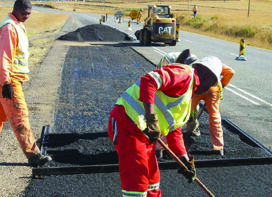Connected cars provide a feeling of safety to the users. With the proliferation of sensors in the vehicle, data may be useful for the vehicle manufacturer, user, owner and the Government as per their requirement and rights. Further extending connectivity on the roads for managing traffic, surveillance cameras, safety for the pedestrian may create a smart infrastructure for the automotive sector. Connected cars will drive the transformation of global wireless data networks, radically altering global transportation, as well as business models, revenue sources and ecosystems, states Sushil Kumar, Dy. Director General (IoT), Telecommunication Engineering Center, Department of Telecommunications, Ministry of Communication, Government of India.

The rapidly increasing vehicle population in India puts a heavy demand on traffic management in metropolitan cities and other towns. Intelligent Transportation System is an established route to address this and minimize traffic problems.
Use of IoT / ICT technology may resolve various issues related to automotive sector, M2M enabled transportation system include telematics and all types of communications in vehicles and also vehicle to Vehicle (V2V), Vehicle to pedestrian (V2P), Vehicle to infrastructure (V2I) and Vehicle to Network/ application (V2N).
Communication technology plays an important role as the data is required to be transmitted and received in time. If the data is not delivered in time, it has got no value. TEC released two Technical Report on Communication Technologies in M2M/ IoT domain covering cellular and non- cellular communication technologies and related use cases.
Technical Report released in 2017 on Communication technologies in M2M/ IoT domain1 covered in detail the Cellular Technology (2G, 3G, 4G i.e. up to LTE 3GPP release 14), Low power wireless communication technologies (NFC, RFID, Bluetooth, ZigBee etc.), Low power wide area network technologies (LPWAN – cellular/ non-cellular), Wi-Fi [IEEE 802.11 a, b, g, n, ac (variant of Wi-Fi)], DSRC (802.11p), wire line (PLC, DSL, FTTH) etc. and the related use cases.
RFID based Electronic Toll Collection devices are being deployed in India on various National Highways / Expressways, in the Sub1 GHz band (865 – 868 MHz). Non-cellular LPWAN technologies like LoRa, Sigfox work in 865-868 MHz band.
Embedded SIM (M2M SIM) is quite useful for the vehicle tracking services as it is in the form of IC and is tamper proof. It can tolerate temperature from -40 degree to +125 degree Celsius. Normal SIM card is not suitable for harsh conditions of vehicles like vibrations, temperature, and humidity. GSMA has created specifications for embedded M2M SIM, with Over-the-Air (OTA) provisioning. Embedded SIM technology offers big opportunities for auto manufacturers as the lifecycle of an Embedded SIM is, around 10-15 years.
Embedded SIM may have the subscription from more than one telecom service providers (up to five) and switching is possible from one TSP to another remotely or non-availability of signal from the main TSP. SM-DP and SM-SR are the key network element for provisioning embedded SIM services. TEC released a Technical report (TR) V2V/ V2I Communication and Embedded SIM in 2015. Based on this TR, Interface Requirement (IR) of the embedded SIM was prepared by TEC.
Various use cases in automotive sector: There may be a large number of use cases depending upon the local requirements. Important use cases are Vehicle tracking, e-call (911 in USA and 112 in Europe, India has adopted 112), V2x (x refers to Vehicle, Infrastructure, Network, People) applications, Traffic control, Navigation, Infotainment, Fleet management, Asset tracking, Manufacturing and logistics, Intelligent transport System, Waste management, Water distribution, Smart Parking, School bus tracking etc.
ITU-T Recommendation Y Suppl. 53 (12/2018)4 on IoT use cases is having three use cases related to automotive sector as listed below:
- Vehicle Emergency Call System for automotive road safety
- Digitization and automation of Vehicle Tracking, Safety, Conformance, Registration and Transfer via the application of e-SIM and Digital Identity
- RFID Based Digital Identification for Vehicle Tracking, Registration, and Data Transfer
Smart Over-the-Air (OTA) Updates: Over-the-air updates (OTA) require cellular connectivity, and given the size of some updates, 5G will make the process far faster and more efficient. OTA can enable OEMs to fix, maintain and improve vehicle software remotely by downloading code to the vehicle from a cloud-server.
Due to advancement in technology further study has been done and the Technical Report on Emerging Communication Technologies and Use cases in IoT domain5 released by TEC in November 2021 covers 5G, Wi-Fi 6, WiFi 6E, WiFi HaLow, Bluetooth Mesh and some important use cases such as Intelligent transport system (Connected vehicles, C-V2X etc.), Private Industrial Network (Smart factories, Industry 4.0), Smart homes etc. It provides recommendations on spectrum and regulatory related aspects, which may be quite useful in the development of eco-system in India.
There are two technologies for V2X applications namely DSRC developed in 1990s in USA and C-V2X based on 3GPP specifications (Release 14 and beyond):
DSRC (Dedicated Short Range Communications): DSRC technology is a two way short to medium range wireless communication capability that permits very high data transmission at low latencies critical in communications-based active safety applications. It is based on IEEE 802.11p standards, called as Wireless Access in Vehicular Environment (WAVE).
DSRC supports low latency, Vehicle to Vehicle (V2V) and Vehicle to Infrastructure (V2I) communication. Important use cases being provided through DSRC technology are Vehicle Safety service, Commercial transaction via cars, Toll collection, Traffic management etc.
DSRC is deployed using on-board units (OBUs) and road-side units (RSUs). RSUs can use existing roadway infrastructure, including traffic lights, traffic signal controllers and traffic signs, and be collocated with these devices.
It is working in the frequency range 5.850 -5.925 GHz. FCC has allocated 75 MHz spectrum in the 5.9 GHz band and European Telecommunications Standards Institute (ETSI) has identified of 30 MHz spectrum in the 5.9 GHz band for ITS.
This technology is already in use in USA, Canada, Europe, Japan, Korea and Singapore etc.
Detailed study of the spectrum requirement for V2V / V2I communication and Embedded SIM are available in the Technical Report released in TEC named as V2V/ V2I Radio Spectrum and Embedded SIM6

Cellular V2X (Vehicle to everything): LTE C-V2X specifications released by 3GPP in Rel 14 in 2017 establishes the foundation for safety use cases. C-V2X is said to provide not only the direct communication (which DSRC provides) but also the network based communication V2N which can be used to provide network assistance for safety related features. C-V2X employs two complementary transmission modes:
Short-range direct communications
- Vehicle – to – vehicle (V2V) for collision avoidance safety system etc.,
- Vehicle – to – Infrastructure (V2I) for traffic signal timing / priority etc.
- Vehicle – to – Pedestrian (V2P), such as cyclists and pedestrians for safety alerts etc.
In this mode, C-V2X works independently of the cellular networks in dedicated 5.9GHz Spectrum band.
Long-range network communications
- Vehicle – to – network (V2N) for real time traffic routing / cloud services.in which C-V2X employs the conventional mobile network to enable a vehicle to receive information about road conditions and traffic in the area, beyond the driver’s line of sight.
C-V2x specifications published by 3GPP are listed below:
- LTE based C-V2X, as specified in 3GPP Release 14 (published in 2017), and Release 15 (published in 2018).
- Applications and protocols developed by SAE.
3GPP Release 14 (published in 2017) has provided the specifications for LTE based C-V2X which provides improvements over 802.11p / DSRC technology for active safety use cases and beyond. 3GPP Rel 15 (published in 2018) provides further improvement in C-V2X safety, range and reliability.
3GPP Rel-16 (published in 2020) provides specifications for 5G and NR based C-V2X, with continuing evolution path for future releases. 5G NR C-V2x will have backward compatibility with Rel 14 C-V2x.
5G roadmap will further improve the connected vehicle segment built on cellular V2X.
C-V2X is designed to work in ITS 5.9 GHz spectrum band for vehicles to talk to each other on harmonized dedicated spectrum. C-V2X support in ITS band was added in 3GPP Release 14 published in 2017. V2V, V2I and V2P services require low latency network, therefore operate through RSU (road side unit) in 5.9 GHz band and is independent of cellular communication. V2N operates through cellular network.
C-V2X Use cases: Some of the important C-V2X Use cases are Forward Collision Warning, Emergency Electronic Brake Lights, Do Not Pass Warning, Left Turn Assist, Intersection Movement Assist, Blind Spot Warning/ Lane Change Warning, Emergency Vehicle Alert, platooning etc.
5GAA (5G automotive association) is a cross industry consortium connecting the vehicle manufacturers and telecom industry to work closely together to develop end to end solutions for future mobility and transportation services. 5GAA has over 130 member companies representing Global automakers, mobile operators, semiconductor companies and test equipment vendors. 5GAA is working on intelligent transport solutions based on C-V2X technology and a number of trails are already in progress in a number of countries.
Spectrum allocation: C-V2X has widespread support within the mobile and automotive industries. The Federal Communication Commission (FCC) USA has issued a directive in November 2020 to allocate the upper 30 MHz of the 5.9 GHz (5.895 – 5.925) ITS band to C-V2X technology that gives the C-V2X industry the green light to deploy C-V2X Roadside Units (RSU) and Onboard Units (OBU).
The Ministry of Industry and Information Technology China also issued the administrative regulations on the Use of 5905-5925 MHz Spectrum for Direct Connected Communication on the Internet of Vehicles, which established dedicated C-V2X spectrum with a total bandwidth of 20 MHz.
In India, the current National Frequency Allocation Plan allows for use of frequency band 5875 – 5925 MHz for Intelligent Transport Networks (IND 30). Suitable spectrum (around 30 MHz) may be allocated for C-V2X in this range.
Embedded SIM specifications have also been included in BIS standard IS168333.Department of Telecom (DoT) approved the use of Embedded SIM with over the air (OTA) provisioning in India in May 2018.3
 TrafficInfraTech Magazine Linking People Places & Progress
TrafficInfraTech Magazine Linking People Places & Progress


